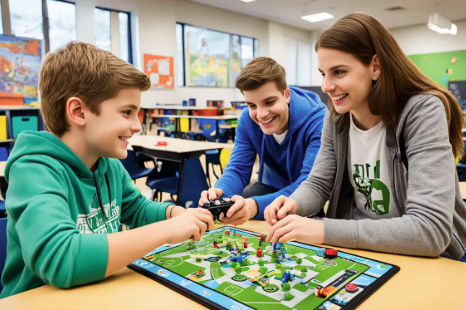Gamification—the use of game design elements in non-game contexts—has become an effective strategy in education to boost motivation, engagement, and achievement. When applied to personalized learning, gamification enhances student-centered experiences by adding elements of choice, challenge, and reward. This approach encourages learners to take ownership of their progress in a fun, interactive way.
Understanding the Value of Gamification
Gamification taps into the natural human desire for achievement, competition, and recognition. It transforms ordinary learning tasks into engaging experiences that maintain interest over time. By integrating gamified elements into personalized learning, educators can support student autonomy while reinforcing mastery of academic content.
Key Gamification Elements in Personalized Learning
- Points and Badges: Rewarding students for completing tasks or mastering concepts with points or badges reinforces progress and builds confidence.
- Levels and Progression: Creating levels aligned with learning milestones allows students to advance at their own pace while maintaining a sense of direction.
- Challenges and Quests: Personalized “missions” tied to individual goals make learning feel purposeful and exciting.
- Leaderboards (with Caution): When used thoughtfully, leaderboards can foster healthy competition and peer motivation, especially when focused on personal improvement rather than comparison.
- Instant Feedback: Gamified systems often provide immediate feedback, helping students adjust strategies and stay on track.
Aligning Gamification with Personalized Learning Goals
Gamification should not replace personalized learning—it should enhance it. Each gamified element must align with student learning goals and preferences. For example, a visual learner might prefer game-based simulations, while a student who enjoys storytelling might engage more deeply with narrative-based quests. Customization ensures that gamification supports—not distracts from—meaningful learning.
Using Technology to Implement Gamification
Many digital platforms offer built-in gamification features. Learning management systems, apps, and interactive tools can help educators:
- Track student progress with achievement dashboards
- Create interactive lessons with branching scenarios
- Offer personalized learning paths through unlockable content
Tools like Classcraft, Kahoot!, and Quizizz allow educators to integrate gamified strategies in a way that supports differentiated instruction and student choice.
Encouraging Intrinsic Motivation
While gamification includes external rewards, it should also nurture intrinsic motivation. Focus on celebrating effort, growth, and persistence rather than only high scores. Encourage students to reflect on what they learned during a challenge, not just whether they “won.”
Monitoring Impact and Adjusting Strategies
As with any educational tool, it’s important to evaluate how gamification affects learning outcomes. Use data and student feedback to refine your approach, ensuring it remains aligned with personalized learning goals. Flexibility is key—some students may thrive in a gamified environment, while others may prefer different methods.
Conclusion
Gamification brings energy, excitement, and deeper engagement to personalized learning. When used strategically, it creates interactive learning journeys that motivate students, celebrate progress, and reinforce academic skills. By combining personalization with purposeful play, educators can create classroom experiences that are both meaningful and memorable.













